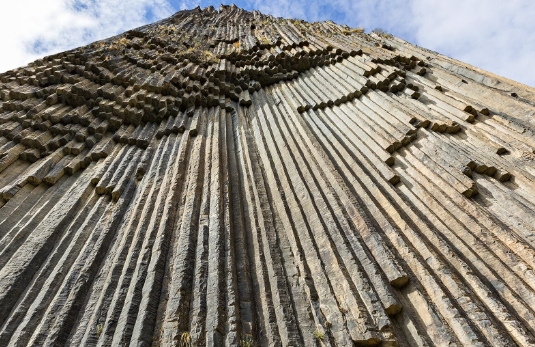Basalt is a commonly found rock that has intrigued scientists for decades. The process of its formation is still not fully understood, but researchers are getting closer to unraveling the mystery.
Origin of Basalt
Basalt is formed from the rapid cooling of lava flow on the Earth’s surface. The magma that forms basalt usually comes from the Earth’s mantle, where temperatures are extremely high.
Composition of Basalt
Basalt is composed mainly of silica and iron, with smaller amounts of magnesium and calcium. This composition gives basalt its dark color and dense texture.
Formation process
When basaltic lava erupts onto the surface of the Earth, it cools rapidly, forming solid rock. Basaltic lava flows cool quickly because they are low in viscosity, meaning they flow easily and do not trap heat for long periods.
Impact of basaltic eruptions
Basaltic eruptions are typically non-explosive, unlike other types of volcanic eruptions. This means that they do not produce the same levels of ash and gas emissions, making them less dangerous to human populations.
Why study basalt?
Basalt is not only a fascinating geological feature but also an important resource. It is used in construction materials, road paving, and even as a filter in water purification systems. Understanding how basalt forms can help us better utilize this valuable material.
In conclusion, the formation of basalt remains a complex and mysterious process, but researchers continue to make progress in understanding its origins. By studying basalt, we can gain valuable insights into the Earth’s geological history and the potential applications of this unique rock.

